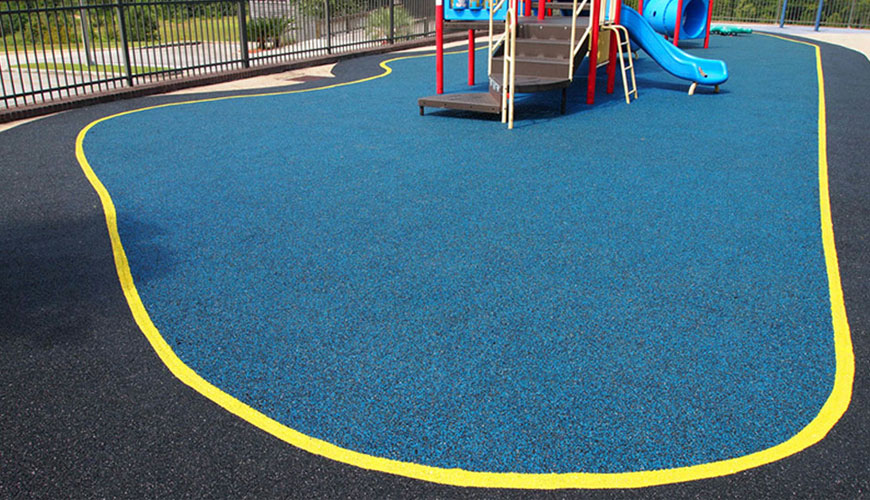

EUROLAB laboratory provides testing and compliance services within the scope of EN 1176-1 standard. This part of the EN 1176 standard specifies general safety requirements for permanently installed public playground equipment and surfacing. Additional safety requirements for certain parts of playground equipment are specified later in this standard.

This part of EN 1176 covers playground equipment for all children. It has been prepared in full recognition of the need for supervision of young children and less able or less competent children.
The purpose of this part of EN 1176 is to provide an appropriate level of safety when playing in, on, or around playground equipment while promoting activities and features that are known to be beneficial because they provide children with valuable experience in playing.
This part of EN 1176 is applicable to playground equipment for individual and collective use by children. It also applies to equipment and units installed as children's playground equipment, although they are not manufactured as such, but excluding those defined as toys in EN 71 and the Toy Safety Directive. Not applicable to adventure playgrounds other than commercially available.
Adventure playgrounds are fenced, safe playgrounds, operated and staffed according to widely accepted principles that encourage children's development and often use self-constructed equipment.
This part of EN 1176 specifies requirements to protect the child from hazards they may not foresee when using the equipment as intended or in a way that can reasonably be predicted.
The use of electricity as a game activity or a driving force in game equipment is outside the scope of this standard. Users' attention is drawn to European and local national standards and regulations that must be observed when using electricity.
Play equipment placed in water where water can be seen as a shock absorbing surface is not fully covered by this standard and there are additional risks associated with wet environments. The risk of exposure to excessive levels of UV radiation is not covered by this standard.
The requirements of this standard are not intended to reduce the contribution of playground equipment to a child's development and/or educationally meaningful play. This standard recognizes the difficulties of addressing safety issues by age criteria alone, because the ability to deal with risk is dependent on the skill level of individual users, not age. In addition, users outside the intended age range will almost certainly benefit from gaming equipment.
Risk taking is an essential feature of play delivery and any setting where children legally spend time playing. Providing play aims to offer children the chance to encounter acceptable risks as part of a stimulating, challenging and controlled learning environment. Providing play should aim to manage the balance between the need to present risks and the need to protect children from serious harm.
Security management principles apply to both workplaces in general and game provisioning. However, the balance between safety and benefits is likely to be different in the two environments. In play delivery, some degree of risk exposure can be beneficial as it fulfills a basic human need and gives children the chance to learn about risk and its consequences in a controlled environment.
With developmental respect for the peculiarities of children's play and the ways in which children enjoy play in the playground, children need to learn to deal with risk, which can lead to bumps and bruises and sometimes even a broken limb. The aim of this standard is, first of all, to prevent accidents with a disabling or fatal outcome and, secondly, to reduce the serious consequences of mishaps that will inevitably occur in children's quest to expand their social, intellectual or mental capacity.
Acceptance and denial of access as a security measure is problematic, for example, due to breach of control or peer assistance. Crucial requirements such as head and neck compression and protection against accidental drops were written with this in mind. It is also recognized that there is a growing need for game delivery accessible to users with disabilities. This, of course, requires playgrounds to strike a balance between security and offering the necessary level of difficulty and incentive to all possible user groups. However, for the purpose of protection against head and neck compression, this standard does not take into account children with large head sizes such as hydrocephalus or Down syndrome, or those wearing helmets.
EUROLAB, with its more than 25 years of experience, state-of-the-art accredited laboratories and expert team, helps you get precise and fast results. Do not hesitate to contact our laboratory for your testing and certification requests.
To get an appointment, to get more detailed information or to request an evaluation, you can ask us to fill in our form and reach you.